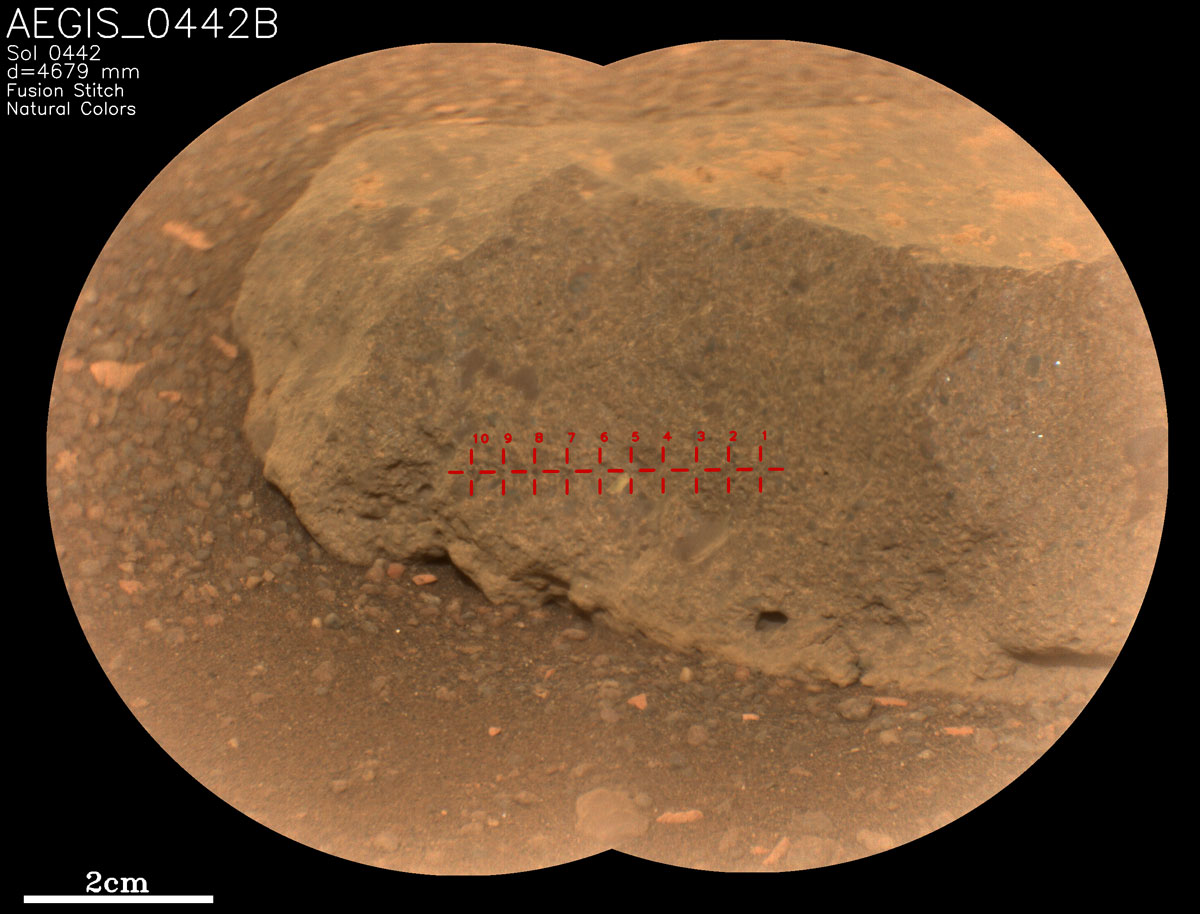2 min read

As Perseverance celebrates its second anniversary on Mars, our team is reflecting on the rover’s remarkable journey so far. In the past two years, Perseverance has collected 18 Martian samples, traversed over 9 miles, transmitted over 200,000 images to Earth, supported the Ingenuity helicopter with its 42 flights, and much more. Now, after spending nearly 6 weeks creating the Three Forks sample depot, the rover is back on the road again. Our destination is a location that scientists have been keen to investigate since the start of the mission: the top of the ancient river delta in Jezero Crater.
Every great road trip includes stops to sightsee and this one is no exception. On February 2nd (Sol 697) we stopped at a location we nicknamed Little Devil’s Stairs, where SHERLOC and PIXL took close-up scans of the surface of a nearby rock to determine its chemical composition. At our next stop, nicknamed Knob Mountain, SuperCam and Mastcam-Z imaged several nearby outcrops.
One of the most exciting developments of the past week was the deployment of the latest version of Perseverance’s advanced AI software, Autonomous Exploration for Gathering Increased Science (AEGIS). Developed by NASA’s Jet Propulsion Laboratory, AEGIS enables the SuperCam instrument to autonomously identify and ‘zap’ rocks on Mars using its Laser-Induced Breakdown Spectroscopy (LIBS) technique. AEGIS increases the number of rocks we can analyze per sol and allows the rover to make the best use of its time and resources.
The initial iteration of AEGIS, nicknamed AEGIS-Lite, was deployed on May 18th, 2022 (Sol 442). This new iteration, nicknamed AEGIS-Heavy, enhances the rover’s capabilities by enabling the autonomous use of SuperCam’s Visible and InfraRed (VISIR) technique in conjunction with LIBS. VISIR provides scientists with valuable information about the mineralogy and molecular structures of rocks. AEGIS-Heavy also includes several other upgrades, such as the ability to target up to 5 rocks at a time and the ability to target rocks in front of the rover as well as on its right side. The SuperCam team is eager to expand the use of AEGIS-Heavy over the coming weeks.
Written by Matthew Brand, SuperCam/ChemCam Engineer at Los Alamos National Laboratory







